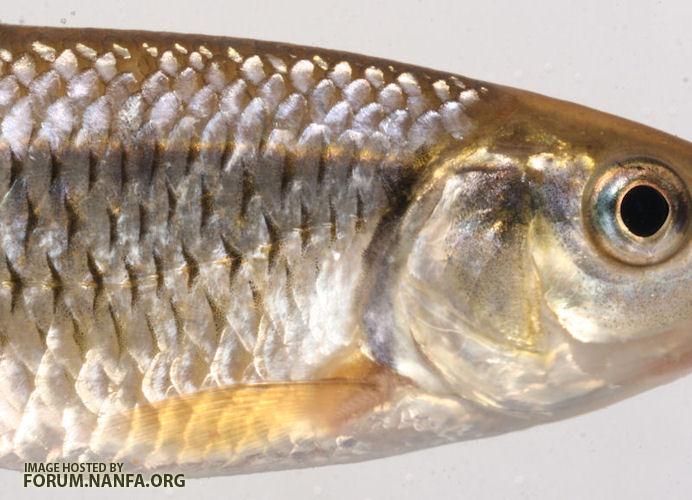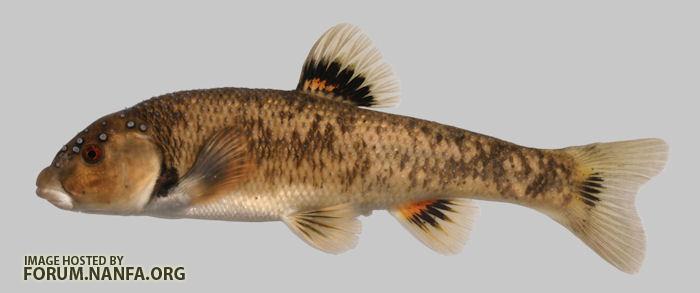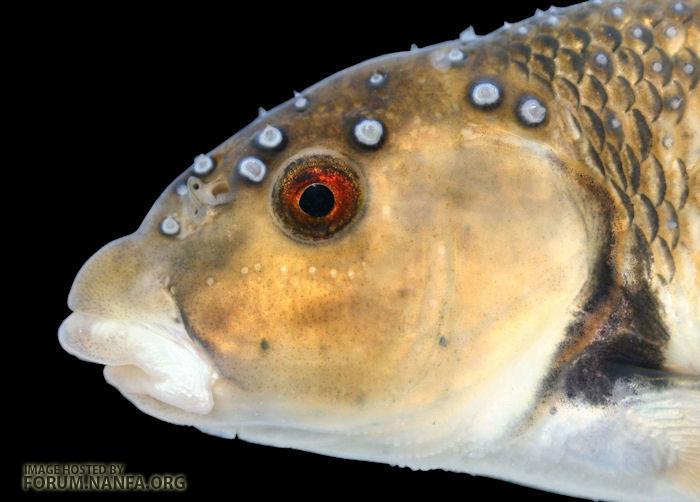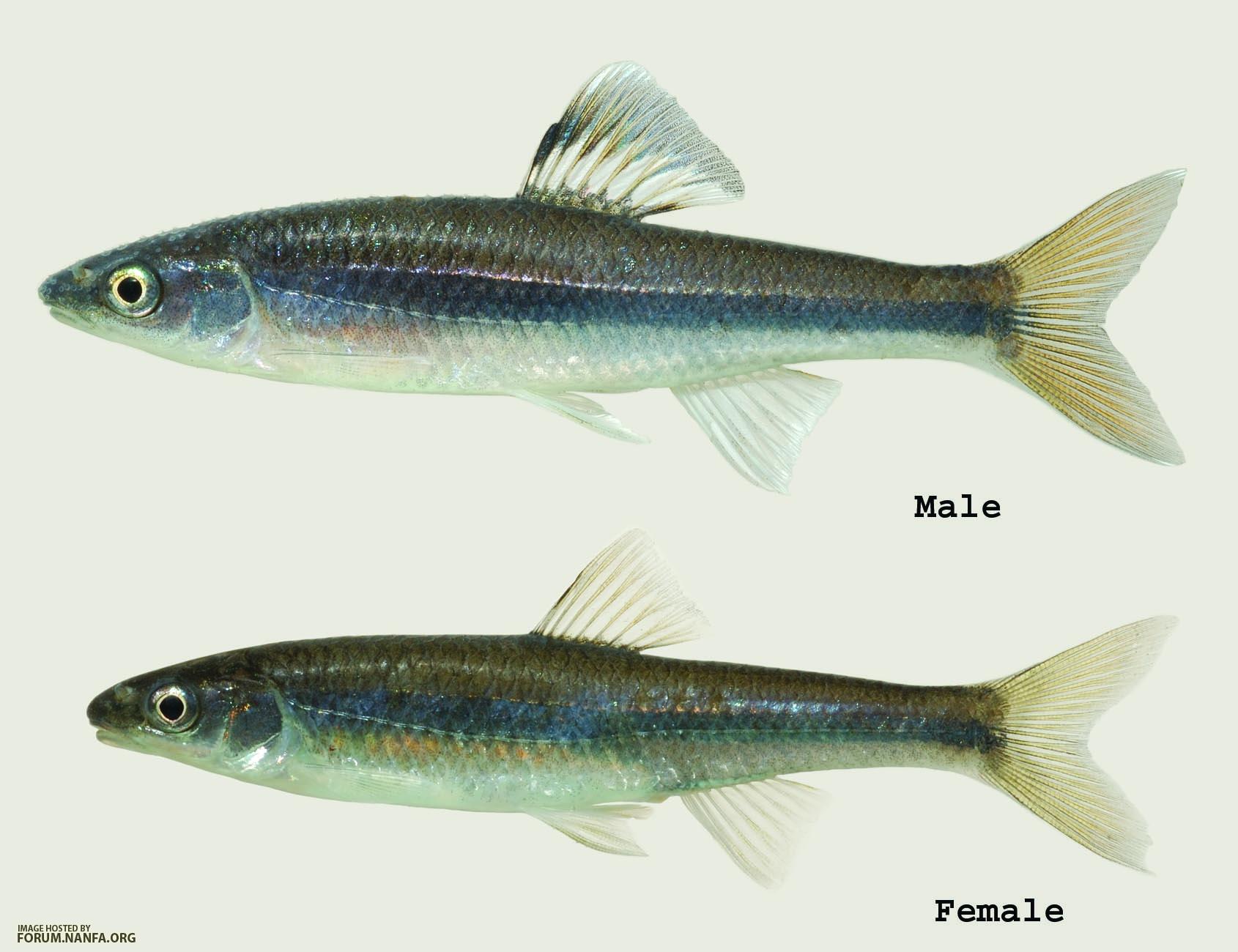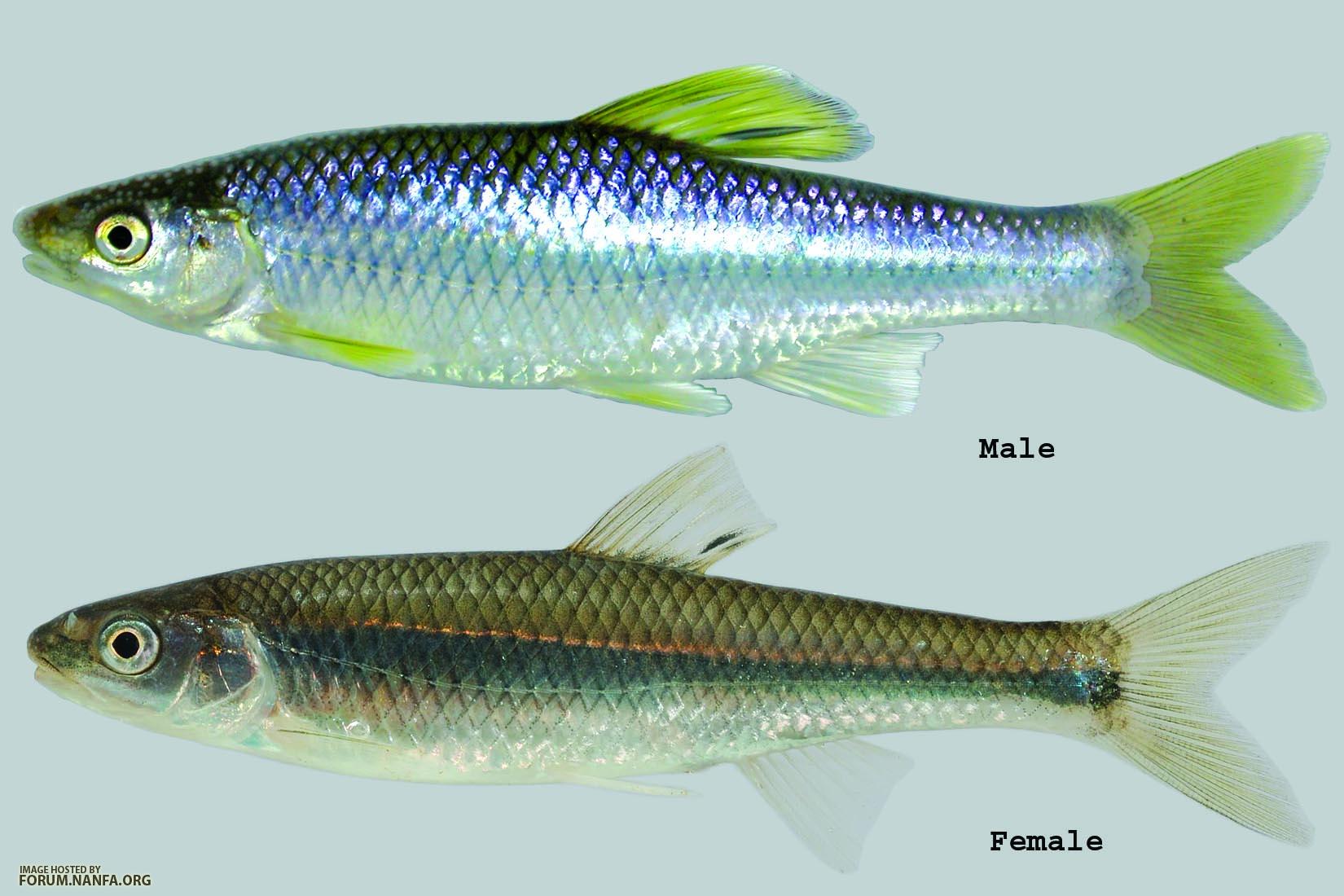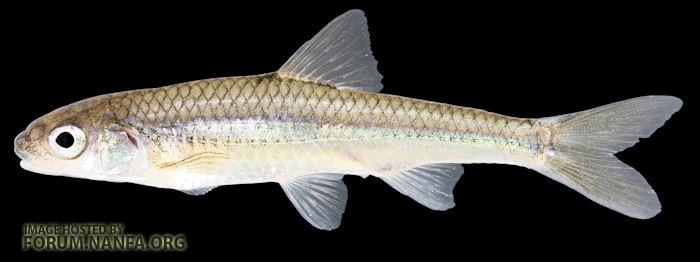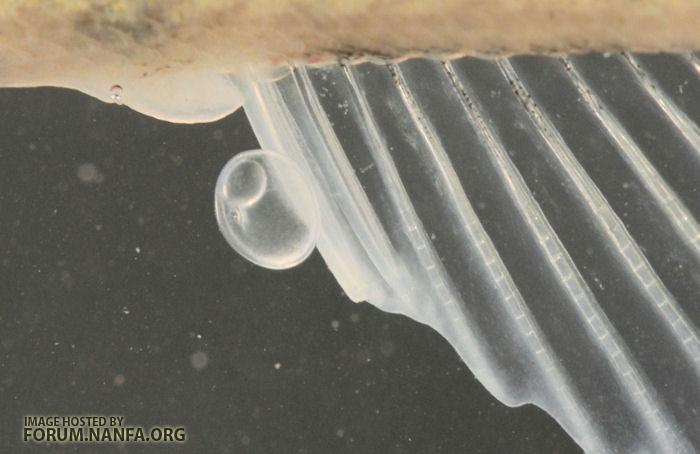That's even more amusing that Brian's common shiner is from the Ohio drainages. What makes this even more fun, I found out that the striped shiner is from the River Raisin in Michigan

That's a great photo because you don't have all the color in the way. Perhaps a nape shot from the dorsal view would help to clear it up even more.
Look at the compression on these scales, red vs green.
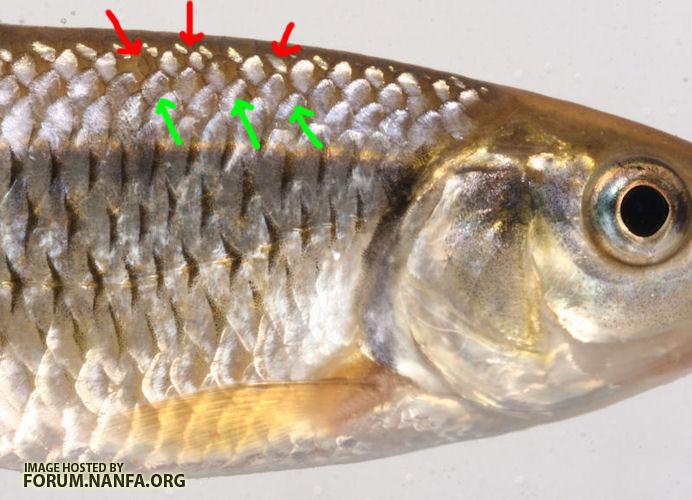
You don't see that on striped shiner.
So I looked into this a little more now that I'm with all my books. The big fat confusion seems to be related to Gilbert 1961 Copeia:181-92. He lumped all this as subspecies (including
albeous) , however Lee et al. 1980 Atlas of NA Fishes even recognized the Gulf drainages as subspecies
isolepis, which I'm glad we haven't had that enter this discussion lol.
The type for
chrysocephalus is from Danville, KY and the type for
cornutus is from the Walkill River, NY. There is perhaps more descriptive work necessary here, but for the time, you have to go with the currently accepted published hypothesis for the species.
Ergo, the description is the strongly "striped shiner" as the picture I gave from the Green River. Thus, on the rapid eyeball assessment, if you have compressed scales, you have a
cornutus.
My argument is based on field observations where both occur, without hybridization, without intergradation, etc. It's time to break this cycle of misidentification.
Todd



